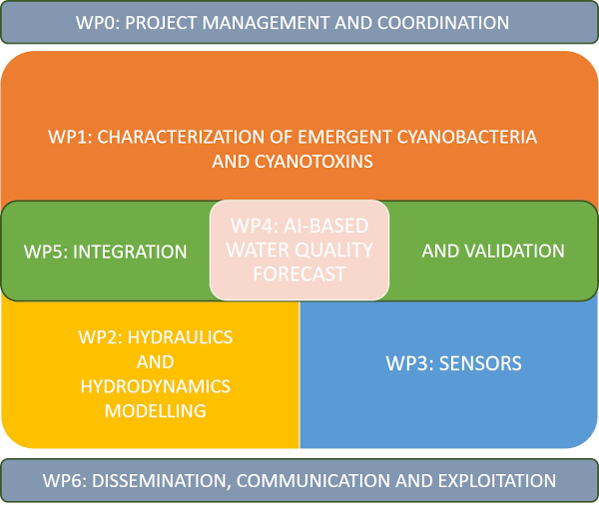AIHABs
Artificial Intelligence-powered Forecast for Harmful Algal Blooms
Partners
Partners
Norwegian University of Science and Technology (NTNU)
Helmholtz Centre Potsdam - German Research Centre for Geosciences (GFZ)
The University of South Bohemia in České Budějovice (USB)
International Iberian Nanotechnology Laboratory (INL)
Universidad Autónoma de Madrid (UAM)
University of Santiago de Compostela (USC)
Abstract
Abstract
Eutrophication of water bodies in Europe is contributing to the increase of Harmful Algal Blooms (HABs) which poses a serious risk to human health. To address this problem, the AIHABs project will develop an early warning system to forecast the occurrence, spread and fate of cyanotoxins caused by HABs in inland and coastal waters, using Artificial Intelligence (AI) and the latest innovations in mathematical modelling, nanosensors, and remote sensing.
The novelty of this project lies in merging these tools with the joint purpose of providing an early warning system to decision-making authorities in terms of risk to the public. The model predictions will allow timely action to minimise the risks of consuming surface waters or using them as recreational resources when the water bodies are prone to produce toxic cyanobacterial blooms.
A number of candidate sites with a history of HABs in the countries of the project partners will be evaluated using multi-criteria analysis in order to identify the most suitable inland and coastal water sites for use in the study. The main criteria for selecting the sites will be the availability of the required data for modelling and the strong evidence of historical HABs.
WP structure
WP structure
WP number | Led by |
| WP0 | TU Dublin |
| WP1 | UAM |
| WP2 | TU Dublin |
| WP3 | INL |
| WP4 | USB |
| WP5 | UAM |
| WP6 | NTNU |

Expected research results
Expected research results
- AI-based software for forecasting water quality in inland and coastal water bodies
- Calibration, training and validation methodologies to correlate the results of the microbiological analysis in the lab and the output of the AI-based predictive model
- Computer vision algorithms based on deep learning for detecting algae in water bodies
- Validation of the effectiveness and efficiency of the monitoring and forecasting subsystems of the AIHABs in a coastal water body and in a reservoir